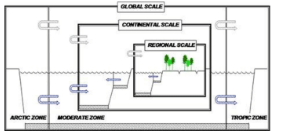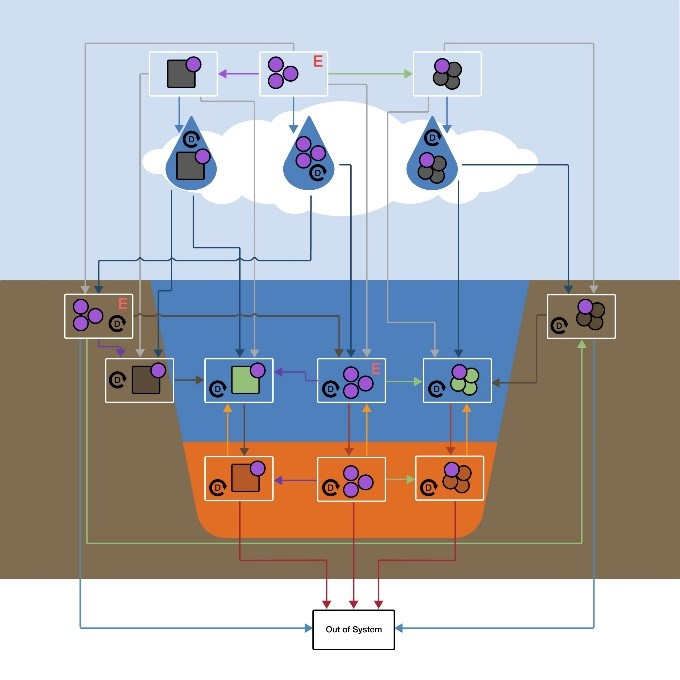SimpleBox4nano
SimpleBox4nano is a regulatory-relevant multimedia fate model that is specifically fit for use with nanomaterials. The tool predicts background concentrations of nanomaterials in air, water, sediment and soil. For this reason, it is the perfect second-tier (screening) tool as part of the NanoFASE Exposure Assessment Framework, which also includes third-tier (higher realism) assessment tools.
Тhe EU’s REACH (Registration, Evaluation, Authorisation and Restriction of Chemicals) regulations require that environmental exposure assessment of chemicals be predicted by modelling. This is done by following the approach and methodology set out in the European Union System for the Evaluation of Substances (EUSES). EUSES is a decision-support tool for predicting environmental exposure in the assessment of chemicals. Part of EUSES is the SimpleBox model, which predicts the exposure concentrations of chemicals in freshwater, marine and terrestrial ecosystems. SimpleBox is a multimedia exposure model which simulates the environmental fate of a chemical by computing its fluxes (mass flow rates) among a series of well-mixed boxes of air, water, sediment and soil on regional, continental and global scales. SimpleBox is a first-principles model, in the sense that it derives mass flow rates taking into account both physical and chemical substance properties and characteristics of the environment modelled. It takes user-specified release rates of the chemical into the environment as input, and produces exposure concentrations in the different compartments of the environment as output. This type of model is known as a ‘Mackay model’, after its inventor, Donald Mackay.

Figure 1: A conceptual model of the structure of SimpleBox, addressing regional, continental and global spatial scales
SimpleBox4nano is a variant of the SimpleBox model, which simulates the specific environmental behaviours of nanomaterials. The main adaptation consists of adding three particulate chemical species to the dissolved species already included in SimpleBox. The three particulate chemical species consist of: i) the emitted nanomaterial, ii) smaller heteroagglomerates (<450 nm) consisting of nanomaterial and natural colloids or aerosols, and iii) bigger heteroagglomerates (>450 nm) consisting of nanomaterials and other particulates found in air, water and soil. SimpleBox4nano calculates mass flows of nanomaterials by simultaneously solving mass balance equations for 4 different chemical species for each environmental compartment in the model. The collaboration with NanoFASE created an opportunity to validate and better understand predicted environmental concentrations (PECs) obtained from SimpleBox4nano, with NanoFASE Water-Soil-Organism model-driven predictions of concentration that are location- and time-specific.
 |
|
Figure 2: SimpleBox4nano expresses ENP transport and concentrations in and across air, rain, surface waters, soil, and sediment, accounting for nanospecific processes such as aggregation, attachment, and dissolution. |
Video resource: Quik et al. 2019 @SETAC. Learn about the comparison of SimpleBox4nano steady-state PEC and spatially distributed local PEC from the NanoFASE WSO model. |
Read more |
Read also |
|
Visit the NanoFASE Library to read summaries of these reports: |
Meesters, J.A.J., et al., 2014. Multimedia Modeling of Engineered Nanoparticles with SimpleBox4nano: Model Definition and Evaluation. Environmental Science & Technology 48:5726-5736. |
Contact

Joris Quik
RIVM, Netherlands
Email: joris.quik@rivm.nl
